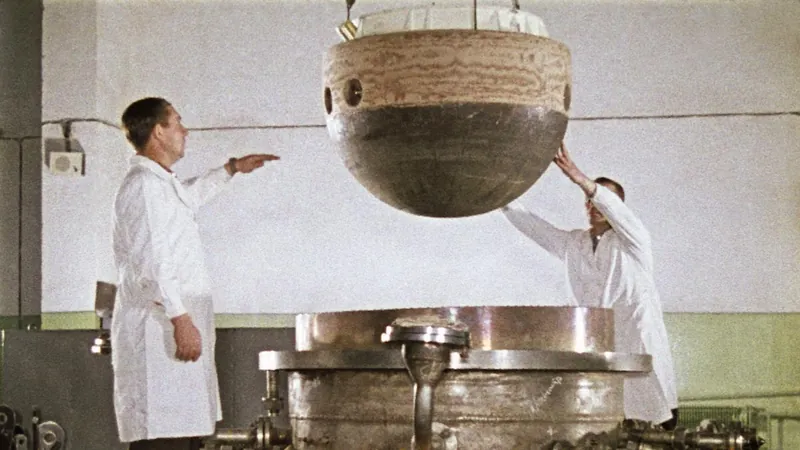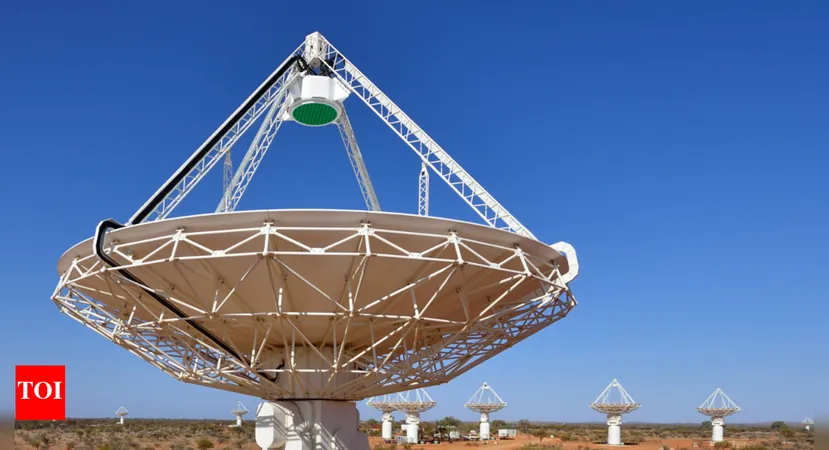
Soviet-Era Spacecraft Poised for a Fiery Return to Earth: What You Need to Know!
2025-05-07
Author: Emma
A Blast from the Past: What Is Kosmos 482?
Get ready for a spectacular event as a fragment of a Soviet spacecraft, Kosmos 482, is set to crash back to Earth after drifting in orbit for over 50 years! Launched in 1972 on a mission to Venus, this spacecraft never made it beyond low Earth orbit and splintered into four pieces.
Re-Entry Predictions: When and Where?
Experts predict that the lander probe, one of these fragments, will make its fiery entry around May 10. There’s a decent chance some of it might survive the intense heat of re-entry, as NASA suggests.
Low Risk of Impact: Chance of Hitting You? Slim to None!
While the exact landing spot remains a mystery, the odds of it causing harm are remarkably low. "Winning the lottery is more likely than being struck by this piece of space debris," says Stijn Lemmens, Senior Space Debris Mitigation Analyst at the European Space Agency.
What’s the Capsule Made Of?
The 1-meter-wide lander capsule weighs nearly half a tonne and boasts a robust heat shield designed to withstand Venus’s extreme atmosphere. This durability could help it survive the uncontrolled plunge back to Earth.
The Unpredictable Flight Path: From London to South America?
The capsule's predicted flight path is expansive, stretching between 51.7° north and south latitude. This means it could potentially touch down anywhere from London to the southern tip of South America!
The History of Uncontrolled Re-Entries
Uncontrolled re-entries aren’t uncommon. Weekly occurrences feature larger spacecraft, while smaller ones make their descent daily, often burning up before touching down. Just look at China's Long March 5B booster, which re-entered over the Indian Ocean in 2022, or the Tiangong-1 space station that mostly disintegrated over the Pacific in 2018.
Future of Spacecraft: Safer Designs Needed!
As Kosmos 482 is monitored closely by international space agencies, the call for safer spacecraft designs is stronger than ever. Experts advocate for systems that allow controlled re-entries, enabling more accurate predictions of landing zones and minimizing risks to people and property.
Stay Tuned: Keep Your Eyes on the Sky!
With this chunk of history set for a dramatic re-entry, all eyes will be on the skies this week. Prepare for an event that reminds us of our long-standing relationship with space—both the wonders and the potential hazards.









 Brasil (PT)
Brasil (PT)
 Canada (EN)
Canada (EN)
 Chile (ES)
Chile (ES)
 Česko (CS)
Česko (CS)
 대한민국 (KO)
대한민국 (KO)
 España (ES)
España (ES)
 France (FR)
France (FR)
 Hong Kong (EN)
Hong Kong (EN)
 Italia (IT)
Italia (IT)
 日本 (JA)
日本 (JA)
 Magyarország (HU)
Magyarország (HU)
 Norge (NO)
Norge (NO)
 Polska (PL)
Polska (PL)
 Schweiz (DE)
Schweiz (DE)
 Singapore (EN)
Singapore (EN)
 Sverige (SV)
Sverige (SV)
 Suomi (FI)
Suomi (FI)
 Türkiye (TR)
Türkiye (TR)
 الإمارات العربية المتحدة (AR)
الإمارات العربية المتحدة (AR)